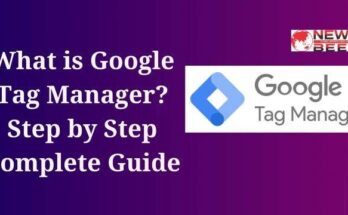In the dynamic world of online advertising, mastering Google Ads is crucial for reaching your target audience. But within this platform lies a powerful tool often misunderstood: Keyword Match Types. These determine how broadly your ads appear in search results, impacting everything from reach to budget. This guide dives deep into Google Ads’ keyword match types, empowering you to craft a targeted and successful campaign.
Understanding the Landscape: Match Types Explained
Google Ads offers three main keyword match types, each with distinct characteristics:
-
Broad Match (Default): The most expansive option, casting a wide net to capture searches containing your keyword, synonyms, related terms, and even misspellings. For instance, a “running shoes” broad match might trigger your ad for searches like “best sneakers for athletics” or “comfortable walking footwear.”
-
Phrase Match: Offers more control than broad match. Your ad appears when a user’s search includes your keyword phrase or variations in the exact order, with additional words before or after. For example, a phrase match for “running shoes” would show your ad for “buy running shoes online” but not “types of running shoes.”
-
Exact Match (Strictest): Provides the most control. Your ad only triggers for searches containing your keyword in the exact order, with no additional words. Using square brackets, like “[running shoes],” ensures the strictest match. This might miss searches like “running shoe reviews” but guarantees your ad reaches those specifically seeking “running shoes.”
Choosing the Right Match Type: A Strategic Balancing Act
The optimal match type depends on your campaign goals and budget. Here’s a breakdown of the pros and cons for each:
Broad Match:
- Pros: Increased reach, captures unexpected queries, ideal for brand awareness.
- Cons: Less control, potential for irrelevant clicks, higher budget spend.
Phrase Match:
- Pros: Good balance between reach and control, captures variations of your core keywords.
- Cons: May still show for irrelevant searches with additional words.
Exact Match:
- Pros: Highly targeted, minimizes irrelevant clicks, maximizes budget efficiency.
- Cons: Limited reach, might miss valuable searches with slight variations.
Beyond the Basics: Broad Match Modifier (BMM) – A Bridge Between Broad and Phrase
Google introduced Broad Match Modifier (BMM) to provide more control within the broad match realm. You indicate a must-have term by adding a plus sign (+) before the keyword within your broad match phrase. For example, +running +shoes would ensure your ad appears for searches containing both “running” and “shoes” but might still capture searches like “best +running shoes for marathons.”
Negative Match Types: Refining Your Targeting
Negative keywords, irrespective of match type, are crucial for excluding irrelevant searches that waste your budget. You can add negative keywords in any match type (broad, phrase, or exact) to prevent your ad from showing for specific searches. Here’s an example:
- Keyword: Running shoes
- Negative Keyword (Exact Match): buy used running shoes
With this setup, your ad wouldn’t show for searches containing “buy used running shoes” despite “running shoes” being your keyword.
Advanced Strategies for Match Type Mastery
- Campaign Structure: Organize campaigns by match type. Broad match campaigns for brand awareness, phrase match for targeted searches, and exact match for high-intent conversions.
- Start Broad, Refine Gradually: Begin with broad match to discover new keywords, then use negative keywords and transition to more specific match types as your campaigns mature.
- Leverage Search Term Reports: Analyze which searches triggered your ads (found under “Keywords” > “Search Terms”). Use this data to identify relevant long-tail keywords (more specific searches) and add them as phrase or exact match keywords.
You May Also Read:
What is Digital Marketing in Hindi
SEO Interview Questions and Answers
Conclusion:
By understanding Google Ads’ keyword match types, you unlock the potential for targeted advertising. Experiment with different combinations, analyze results, and refine your approach to reach the right audience and maximize your return on investment (ROI). Remember, the optimal match type is a dynamic decision based on your campaign goals and ever-evolving search trends. With this knowledge in your arsenal, you’re well on your way to crafting winning Google Ads campaigns.
FAQs:
Q: What are keyword match types in Google Ads?
A: Keyword match types control how closely a user’s search query needs to match your chosen keyword for your ad to be shown. They affect both the reach of your ad (how many people see it) and its relevance (how well it aligns with what users are searching for).
Q: What are the different keyword match types?
A: There are four main keyword match types in Google Ads:
- Broad match: This is the default option and has the widest reach. Your ad can appear for searches that include your keyword, synonyms, related searches, and even misspellings. (Example: Keyword: “women’s hats,” Search query: “buy ladies hats”)
- Phrase match: Ads can show on searches that contain your exact phrase, with additional words before or after. Reordering the words or adding words in the middle will exclude the search query. (Example: Keyword: “women’s hats,” Search query: “best women’s hats”)
- Exact match: This offers the most control and the highest relevance. Your ad will only show for searches that exactly match your keyword, with minor variations like plurals or typos. (Example: Keyword: “women’s hats,” Search query: “women hat”)
- Negative match: These keywords prevent your ad from showing for specific searches, even if they match your other keyword types. (Example: You sell hats but not baseball hats, so you would add “baseball hats” as a negative keyword)
Q: Which keyword match type should I use?
A: The best match type depends on your goals and campaign strategy. Here’s a quick guide:
- Broad match: Good for reaching a large audience and discovering new keywords, but relevance can be lower.
- Phrase match: Offers a balance between reach and relevance, good for targeting specific phrases users might search for.
- Exact match: Ensures your ads appear for the most relevant searches, but may limit your reach.
- Negative match: Essential for excluding irrelevant searches and saving budget.




